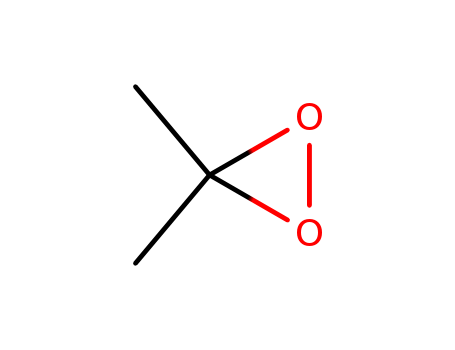10.1021/jo0015974
The research focuses on the synthesis of R-keto esters and amides, which are crucial functional groups for inhibitors of hydrolytic enzymes such as serine and cysteine proteases. The study extends the method of oxidative cleavage of cyanoketophosphoranes using dimethyldioxirane as a mild and selective oxidant, followed by trapping with nucleophiles to yield the desired R-keto compounds. The experiments involved the preparation of cyanoketophosphoranes by coupling corresponding carboxylic acids with (cyanomethylene)phosphorane in the presence of EDCI. The oxidative cleavage was performed by adding dimethyldioxirane to solutions of cyanoketophosphoranes in MeOH for esters or in CH2Cl2 at -78 °C for amides, followed by the addition of the appropriate amine or alcohol nucleophile. The analyses used to characterize the products included flash column chromatography, analytical TLC, NMR spectroscopy (1H and 13C), infrared spectroscopy (IR), electron impact mass spectrometry (EIMS), and high-resolution mass spectrometry (HRMS). The study successfully demonstrated a mild and efficient method for synthesizing R-keto esters and amides with short reaction times and simple workup procedures.
10.1021/jo0626109
The research focuses on the synthesis of medium ring keto-lactones, which are significant in organic synthesis due to their presence in many natural products. The study employs bicyclic δ-hydroxytetrahydrofurans as precursors and utilizes ruthenium tetraoxide (RuO4) for their oxidative cleavage, yielding 9- and 10-membered keto-lactones with moderate to good yields. The precursors were obtained through two alternative procedures: epoxidation by dimethyldioxirane followed by base-catalyzed cyclization, or thallium trinitrate-mediated cyclization. The experiments involved the use of ruthenium trichloride and sodium periodate to generate RuO4 in situ, and the oxidative cleavage was conducted in a biphasic solvent system. The analysis of the resulting keto-lactones was performed using techniques such as gas chromatography (GC), infrared (IR) spectroscopy, low-resolution mass spectrometry (LRMS), and nuclear magnetic resonance (NMR) spectroscopy, which provided detailed information on the structure and composition of the synthesized compounds.
10.1021/jo00066a032
The research focuses on the stereoselective formation of glucal epoxides, which are crucial intermediates in the synthesis of oligosaccharides and other carbohydrate derivatives. The study aimed to find an alternative approach to the existing method of dimethyldioxirane (DMD) oxidation, which has limitations such as the need for rigorous drying and difficulty in scaling up. The researchers explored the cyclization of bromohydrins as a route to glucal epoxide formation, using chemicals such as N-bromoacetamide (NBA), sodium hydride (NaH), potassium hydride (KH), 18-crown-6, sodium phenylthiolate, sodium azide, methoxide, and benzyloxide. They observed that the reaction conditions significantly affected the diastereoselectivity of the epoxide formation, leading to different ratios of a-manno and β-gluco products. The study concluded that the formation and cyclization of bromohydrins offer an alternative route for glucal epoxide synthesis, with potential applications to other carbohydrate substrates, and highlighted the importance of metal ions and solvents in modifying the relative reactivities of the anomeric alkoxides, which influence the stereoselectivity of the cyclization process.
10.1021/jo980604+
The research investigates a novel epoxidation method for olefins using in situ generated dimethyldioxirane under basic conditions. The purpose of this study is to develop a mild, efficient, and safe epoxidation procedure that can be used to prepare acid-sensitive epoxides. The key chemicals used in this research include olefins as substrates, acetone as the precursor for dimethyldioxirane, Oxone (potassium peroxymonosulfate) for generating dimethyldioxirane, and tetrabutylammonium hydrogen sulfate as a phase-transfer catalyst. The reactions are conducted at an apparent pH of 10.5-11.5, often in a CH3CN-dimethoxymethane solvent system, with potassium carbonate (K2CO3) used to maintain the basic environment. The study concludes that this epoxidation method is highly effective for a wide range of olefins, including those with terminal, trans, cis, and trisubstituted configurations, and it is compatible with various functional groups such as acetylenes, allyl silanes, and esters. The procedure is mild, safe, and economical, making it an attractive option for synthesizing epoxides, especially those that are acid-labile.
10.1002/chem.201604507
The research investigates the impact of the electronic properties of dioxiranes on the chemoselectivity of lactam oxidation, aiming to understand how changes in the oxidant's structure influence the reaction pathway. The study compares the oxidation of various lactams using dimethyl dioxirane (DDO) and methyl(trifluoromethyl)dioxirane (TFDO), revealing an unprecedented switch from C-H to N-H oxidation as the fluorine content in the dioxirane increases. The findings, supported by experimental data and computational studies, indicate that the presence of electron-withdrawing fluorine atoms in the dioxirane structure stabilizes a more polar transition state, favoring the heterolytic (2e) N-H oxidation pathway over the homolytic (1e) C-H oxidation. This work highlights the potential for tuning the selectivity of oxidation reactions by modifying the electronic characteristics of the oxidant, offering new insights into the mechanisms of dioxirane-mediated oxidations.





